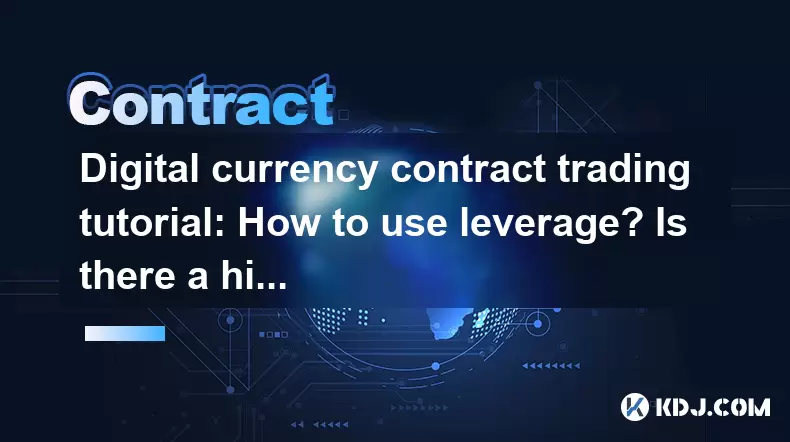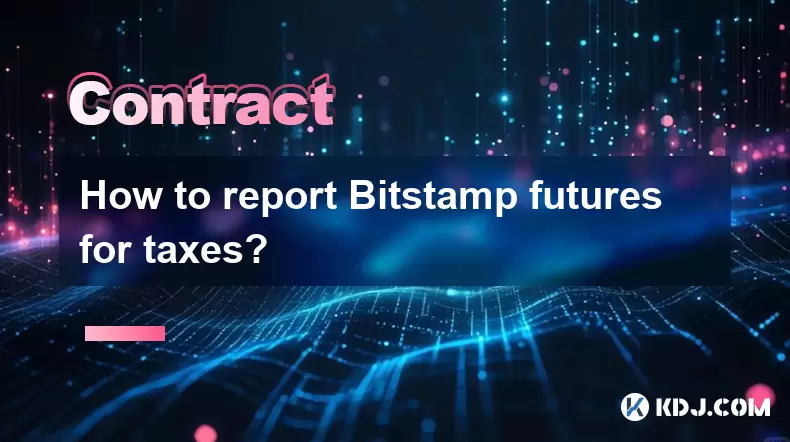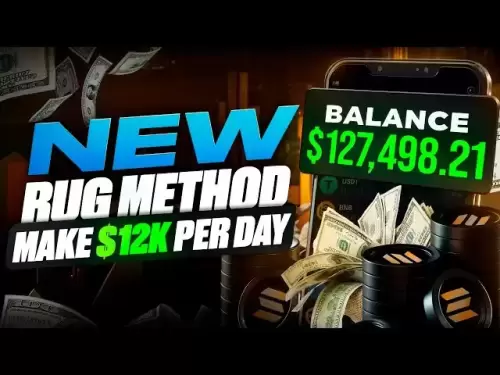-
 Bitcoin
Bitcoin $112400
-1.07% -
 Ethereum
Ethereum $3409
-3.27% -
 XRP
XRP $2.784
-6.60% -
 Tether USDt
Tether USDt $0.9997
-0.03% -
 BNB
BNB $739.3
-2.09% -
 Solana
Solana $158.0
-2.90% -
 USDC
USDC $0.9998
-0.02% -
 TRON
TRON $0.3213
-0.94% -
 Dogecoin
Dogecoin $0.1929
-5.01% -
 Cardano
Cardano $0.6974
-2.82% -
 Hyperliquid
Hyperliquid $36.69
-2.31% -
 Sui
Sui $3.327
-4.80% -
 Stellar
Stellar $0.3672
-5.18% -
 Chainlink
Chainlink $15.65
-3.07% -
 Bitcoin Cash
Bitcoin Cash $525.0
-1.68% -
 Hedera
Hedera $0.2291
-6.00% -
 Avalanche
Avalanche $20.91
-2.96% -
 Ethena USDe
Ethena USDe $1.000
0.00% -
 Toncoin
Toncoin $3.520
-1.12% -
 UNUS SED LEO
UNUS SED LEO $8.968
0.14% -
 Litecoin
Litecoin $105.7
0.26% -
 Shiba Inu
Shiba Inu $0.00001181
-1.79% -
 Polkadot
Polkadot $3.492
-2.08% -
 Uniswap
Uniswap $8.800
-3.10% -
 Dai
Dai $0.9999
-0.01% -
 Monero
Monero $289.9
-3.17% -
 Bitget Token
Bitget Token $4.243
-1.27% -
 Pepe
Pepe $0.00001006
-3.67% -
 Cronos
Cronos $0.1248
-5.68% -
 Aave
Aave $249.7
-2.50%
Digital currency contract trading tutorial: How to use leverage? Is there a high risk of liquidation?
Learn to use leverage in crypto contract trading to amplify gains, but beware of liquidation risks; lower leverage and stop-loss orders can help manage these risks.
May 25, 2025 at 08:21 am

Digital currency contract trading is a popular method for traders to speculate on the price movements of cryptocurrencies without owning the underlying assets. This tutorial will guide you through the process of using leverage in contract trading and discuss the risks of liquidation associated with it.
Understanding Contract Trading and Leverage
Contract trading involves buying or selling a contract that represents a certain amount of a cryptocurrency at a predetermined price. Unlike spot trading, where you exchange actual cryptocurrencies, contract trading allows you to profit from price movements without holding the asset.
Leverage is a key feature of contract trading that allows traders to control a larger position with a smaller amount of capital. For example, with 10x leverage, you can control a position worth $10,000 with only $1,000 of your own money. This amplifies both potential profits and losses.
How to Use Leverage in Contract Trading
To use leverage in contract trading, follow these steps:
Choose a Trading Platform: Select a reputable cryptocurrency exchange that offers contract trading with leverage. Popular platforms include Binance, Bybit, and OKEx.
Open a Trading Account: Register and complete the necessary verification processes to open an account on the chosen platform.
Deposit Funds: Fund your account with the cryptocurrency or fiat currency accepted by the platform.
Navigate to the Contract Trading Section: Find the section dedicated to contract trading, often labeled as "Futures" or "Derivatives."
Select a Contract: Choose the cryptocurrency contract you want to trade. Common options include Bitcoin (BTC) and Ethereum (ETH) contracts.
Set Leverage: Before entering a trade, set the desired leverage level. Most platforms allow you to adjust leverage from 1x to 100x or more.
Place an Order: Decide whether to buy (go long) or sell (go short) the contract based on your market analysis. Enter the amount you want to trade and confirm the order.
Monitor and Manage Your Position: Keep an eye on your open positions and be ready to adjust or close them as market conditions change.
Risks of Liquidation in Contract Trading
Liquidation occurs when the value of your position falls below a certain threshold, and the platform automatically closes your position to prevent further losses. The risk of liquidation is higher when using leverage because small price movements can have a significant impact on your account balance.
Liquidation Price is the price at which your position will be liquidated. It depends on the entry price, the amount of leverage used, and the maintenance margin required by the platform. You can calculate the liquidation price using the formula:
[ \text{Liquidation Price} = \frac{\text{Entry Price}}{1 + \left(\frac{1}{\text{Leverage}} \times \left(1 - \text{Maintenance Margin}\right)\right)} ]
For example, if you enter a long position on BTC at $30,000 with 10x leverage and a maintenance margin of 0.5%, your liquidation price would be:
[ \text{Liquidation Price} = \frac{30,000}{1 + \left(\frac{1}{10} \times (1 - 0.005)\right)} = 27,272.73 ]
This means if the price of BTC drops to $27,272.73, your position will be liquidated.
Strategies to Minimize Liquidation Risk
To minimize the risk of liquidation, consider the following strategies:
Use Lower Leverage: Higher leverage increases the risk of liquidation. Using lower leverage can provide a larger buffer against price fluctuations.
Set Stop-Loss Orders: A stop-loss order automatically closes your position when the price reaches a certain level, helping to limit losses.
Monitor Market Volatility: Be aware of market conditions and adjust your positions accordingly. High volatility increases the risk of liquidation.
Diversify Your Portfolio: Spreading your investments across different assets can reduce the impact of a single position being liquidated.
Regularly Review Your Positions: Keep track of your open positions and be ready to take action if the market moves against you.
Practical Example of Using Leverage
Let's walk through a practical example of using leverage in contract trading:
Scenario: You believe the price of Bitcoin (BTC) will increase in the next few days.
Step 1: You choose a reputable trading platform like Binance and deposit $1,000 into your account.
Step 2: You navigate to the futures trading section and select a BTC/USD perpetual contract.
Step 3: You decide to use 10x leverage, allowing you to control a position worth $10,000.
Step 4: You place a long order for 0.1 BTC at the current market price of $30,000.
Step 5: Your position is now open, and you monitor the market closely.
Step 6: If the price of BTC rises to $33,000, your position's value increases to $11,000, resulting in a $1,000 profit (minus fees).
Step 7: If the price drops to $27,272.73, your position will be liquidated, and you will lose your initial $1,000 investment.
Frequently Asked Questions
Q1: Can I change the leverage on an existing position?
A: It depends on the trading platform. Some platforms allow you to adjust the leverage on open positions, while others require you to close and reopen the position with the new leverage level. Always check the specific rules of your chosen platform.
Q2: What is the difference between isolated and cross margin in contract trading?
A: Isolated margin limits the amount of margin used for a specific position, while cross margin uses the entire account balance to support all open positions. Isolated margin can help limit losses to a single position, whereas cross margin can provide more flexibility but increases the risk of liquidation across all positions.
Q3: How do funding rates affect contract trading?
A: Funding rates are periodic payments made between long and short traders to ensure that the contract price stays close to the spot price. If the funding rate is positive, long traders pay short traders, and if it's negative, short traders pay long traders. These rates can impact the profitability of holding positions over time.
Q4: Are there any fees associated with contract trading?
A: Yes, contract trading often involves various fees, including trading fees, funding fees, and withdrawal fees. Trading fees are charged for opening and closing positions, funding fees are related to the funding rate, and withdrawal fees apply when moving funds out of your trading account. Always review the fee structure of your chosen platform before trading.
Disclaimer:info@kdj.com
The information provided is not trading advice. kdj.com does not assume any responsibility for any investments made based on the information provided in this article. Cryptocurrencies are highly volatile and it is highly recommended that you invest with caution after thorough research!
If you believe that the content used on this website infringes your copyright, please contact us immediately (info@kdj.com) and we will delete it promptly.
- Bitcoin Liquidity, Osmosis Zone, and Investor Interest: A Deep Dive
- 2025-08-03 15:16:44
- Web3, Sports, and Computing Power: A New Ballgame
- 2025-08-03 15:16:44
- Ethereum, Altcoin Surge, and the MAGACOIN Presale: What's the Buzz?
- 2025-08-03 15:16:44
- Crypto Whales, Meme Coins, and Moonshots: Navigating the Wild West of 2025
- 2025-08-03 15:16:44
- Hong Kong Stablecoin Licenses: A Tight Squeeze?
- 2025-08-03 15:16:45
- Dogecoin's Bullish Signals: Engulfing Candle and Whale Accumulation Point to Potential Surge
- 2025-08-03 15:16:45
Related knowledge

Why is my Bitstamp futures position being liquidated?
Jul 23,2025 at 11:08am
Understanding Futures Liquidation on BitstampFutures trading on Bitstamp involves borrowing funds to open leveraged positions, which amplifies both po...

How to report Bitstamp futures for taxes?
Jul 30,2025 at 08:35am
Understanding Bitstamp Futures and Taxable EventsWhen trading Bitstamp futures, it’s essential to recognize that these financial instruments are treat...

Does Bitstamp offer inverse contracts?
Jul 23,2025 at 01:28pm
Understanding Inverse Contracts in Cryptocurrency TradingIn the realm of cryptocurrency derivatives, inverse contracts are a specific type of futures ...

What is the difference between futures and perpetuals on Bitstamp?
Jul 27,2025 at 05:08am
Understanding Futures Contracts on BitstampFutures contracts on Bitstamp are financial derivatives that allow traders to speculate on the future price...

How to find your Bitstamp futures trade history?
Jul 23,2025 at 08:07am
Understanding Bitstamp and Futures Trading AvailabilityAs of the current state of Bitstamp’s service offerings, it is critical to clarify that Bitstam...

Can I use a trailing stop on Bitstamp futures?
Jul 23,2025 at 01:42pm
Understanding Trailing Stops in Cryptocurrency TradingA trailing stop is a dynamic type of stop-loss order that adjusts automatically as the price of ...

Why is my Bitstamp futures position being liquidated?
Jul 23,2025 at 11:08am
Understanding Futures Liquidation on BitstampFutures trading on Bitstamp involves borrowing funds to open leveraged positions, which amplifies both po...

How to report Bitstamp futures for taxes?
Jul 30,2025 at 08:35am
Understanding Bitstamp Futures and Taxable EventsWhen trading Bitstamp futures, it’s essential to recognize that these financial instruments are treat...

Does Bitstamp offer inverse contracts?
Jul 23,2025 at 01:28pm
Understanding Inverse Contracts in Cryptocurrency TradingIn the realm of cryptocurrency derivatives, inverse contracts are a specific type of futures ...

What is the difference between futures and perpetuals on Bitstamp?
Jul 27,2025 at 05:08am
Understanding Futures Contracts on BitstampFutures contracts on Bitstamp are financial derivatives that allow traders to speculate on the future price...

How to find your Bitstamp futures trade history?
Jul 23,2025 at 08:07am
Understanding Bitstamp and Futures Trading AvailabilityAs of the current state of Bitstamp’s service offerings, it is critical to clarify that Bitstam...

Can I use a trailing stop on Bitstamp futures?
Jul 23,2025 at 01:42pm
Understanding Trailing Stops in Cryptocurrency TradingA trailing stop is a dynamic type of stop-loss order that adjusts automatically as the price of ...
See all articles

























































































